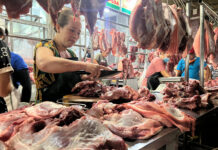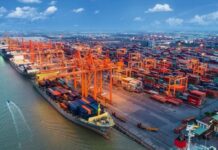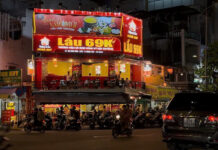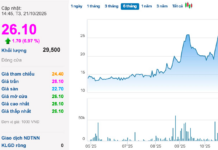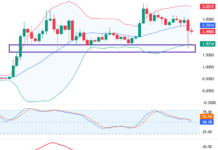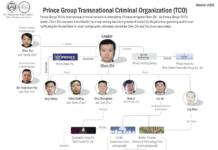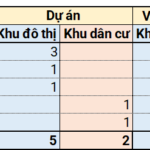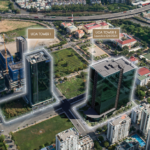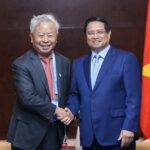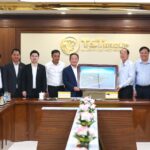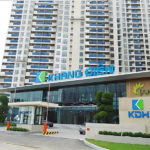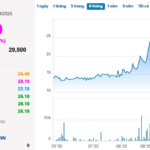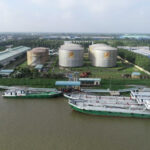The Southern region’s infrastructure market is witnessing an unprecedented influx of leading private economic groups, with proposals of a massive scale.
The race is not just about capital size but also strategic vision, targeting vital locations that will reshape the flow of transportation and trade in this key economic region.
Sun Group, Vingroup, Dai Dung, THACO, and DonaCoop – VinaCapital are among the prominent players with ambitious plans.
In Ho Chi Minh City, the focus is on mega-projects that have the potential to completely transform the urban landscape.
Sun Group has grabbed attention with its bold proposal in Cu Chi: investing in a road along the Saigon River and a metro line in exchange for prime land of ~4,100 hectares.
Not wanting to be left behind, Vingroup has its eyes set on the future of Can Gio with a proposed metro line connecting to the center and a mega-project with a massive investment scale of VND 76,000 to 102,000 billion (approximately USD 3-4.1 billion).
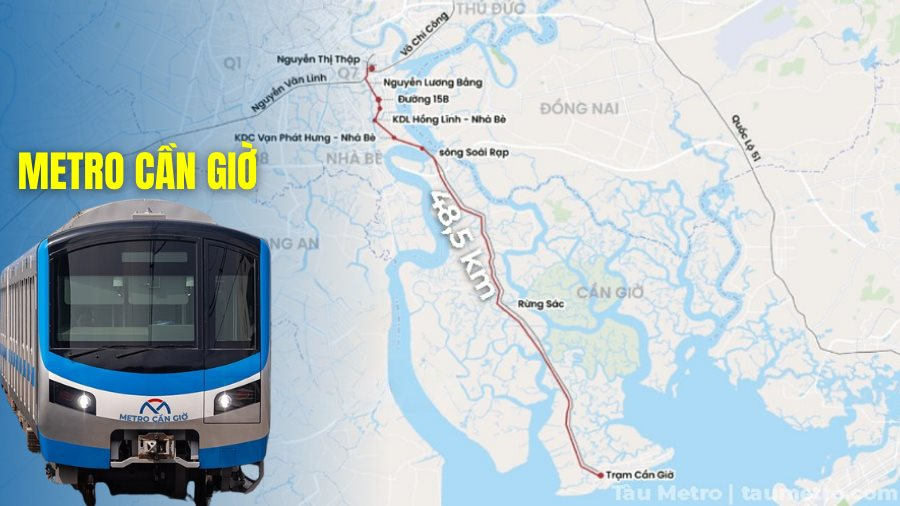
Meanwhile, a critical public investment project, Metro Line 2 (Ben Thanh – Tham Luong), has also become a focal point. With a total investment of VND 47,900 billion (about USD 2.1 billion), this underground metro line spans over 11 km, passing through six key districts, including District 1, 3, 10, 12, Tan Binh, and Tan Phu.
Despite being a public project, its allure has attracted formidable consortiums such as Dai Dung – CC1 – Hoa Phat , who aspire to take on the role of EPC contractor, showcasing the far-reaching appeal of this infrastructure wave.
The race extends to inter-regional connectivity projects, especially those directed towards Dong Nai province. The DonaCoop – VinaCapital consortium proposes to inject VND 65,000 billion (approximately USD 2.6 billion) of private capital into a metro line directly connecting Ho Chi Minh City to the ‘Long Thanh Super Airport.’
This strategic project aims to extend the existing Metro Line 1, forming a high-speed public passenger transport axis from the city center to the Long Thanh International Airport. Spanning about 38.5 km, the project has been approved by the People’s Committee of Dong Nai province for the consortium to establish an investment proposal under the PPP format.
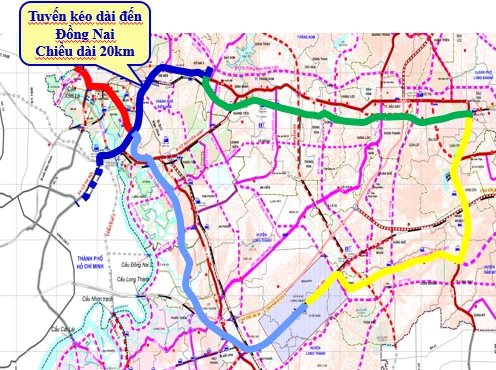
Map of metro lines extending from Suoi Tien Station (Ho Chi Minh City) to the New Administrative Center of Dong Nai province and branching out in various directions – Image courtesy of Dong Nai Construction Department
Another prominent player, Dai Quang Minh Company , has proposed to investigate a road project connecting Dong Xoai (Binh Phuoc) to Ring Road 4 through Dong Nai, with an estimated investment of VND 22,656 billion in the first phase.
On the maritime front, THACO Group aims to dominate southern logistics with its proposed investment in the Cai Mep Ha port, a project valued at over VND 50,000 billion (over USD 2 billion) serving as an international gateway and transshipment hub.
In addition to these private sector initiatives, numerous large-scale public investment projects are being accelerated, forming a dense infrastructure network. The Vanh Dai 3 Ho Chi Minh City project, with a total investment of nearly VND 75,400 billion (about USD 3 billion), is under active construction, promising to complete the transportation ring for the entire region. Key radial highways such as Ho Chi Minh City – Moc Bai (total investment of ~VND 19,600 billion) and Bien Hoa – Vung Tau (total investment of ~VND 17,800 billion) are also in the pipeline.
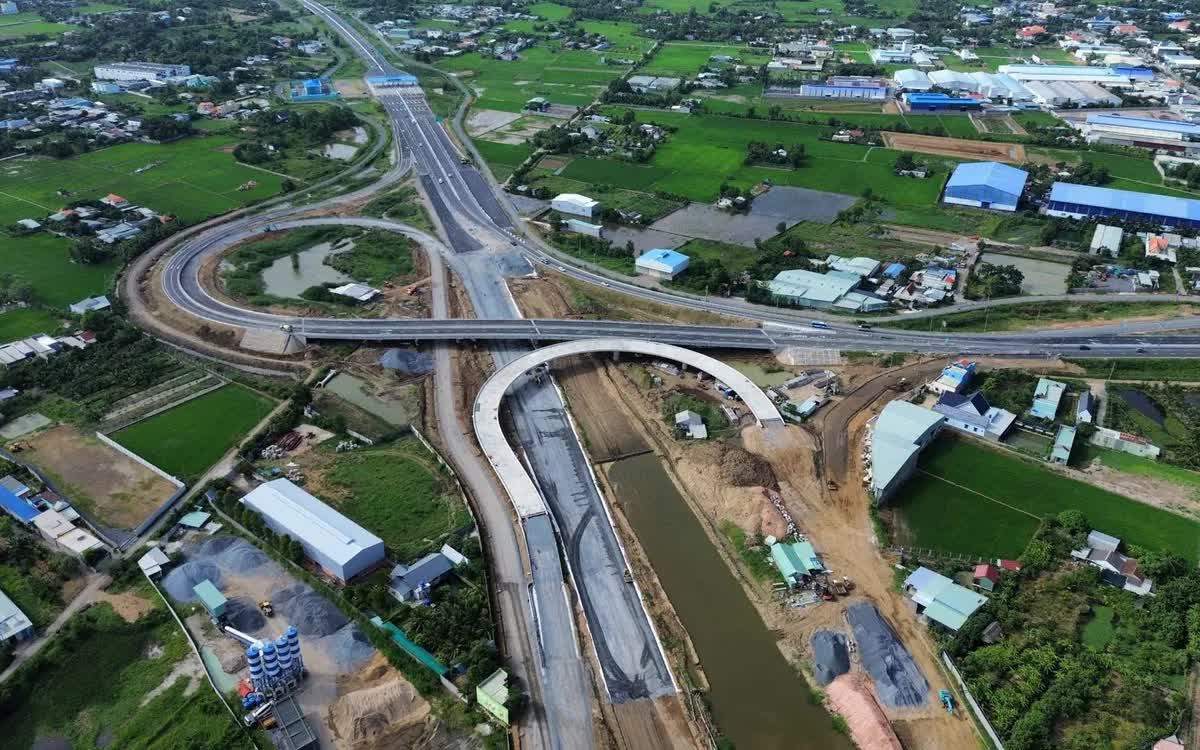
Ho Chi Minh City: The main route of Ring Road 3 will be open to traffic by the end of 2025
Catalyst from Policy Changes
This surge in investment proposals stems from a series of groundbreaking legal reforms, considered the “catalyst” for unleashing private capital.
Firstly, the Law on Investment in the Form of Public-Private Partnership (PPP Law) 2020, for the first time, legalized the right of investors to proactively propose projects, giving them the initiative instead of a passive wait-and-see approach.
Notably, for the metro sector, Resolution No. 188/2025/QH15 and the Railway Law (2025) created a “special and superior” mechanism, allowing the bypass of the investment policy stage, shortening the process by up to 3 years, and delegating approval authority to Ho Chi Minh City.
This is the primary reason why metro lines have suddenly become so attractive.
Additionally, Law No. 90/2025/QH15 played a crucial role in strongly delegating the authority to approve investment policies to the People’s Committees at the provincial level, expediting project handling at the local level. Moreover, the resurgence of the BT model (land-for-infrastructure swap) serves as a magnet for investors with strong real estate capabilities.
These changes have been acknowledged by relevant authorities. Mr. Phan Cong Bang, Director of the Ho Chi Minh City Urban Railway Management Board (MAUR), attributed the shortened investment preparation time to mechanisms like National Assembly Resolution No. 188/2025/QH15 and the Railway Law (2025).
“Simplifying procedures and empowering businesses have been the driving forces behind many investment proposals,” Mr. Bang emphasized.
Risk Warning: Grand Ambitions and Critical “Bottlenecks”
Despite the promising outlook, systemic risks remain, which could hinder this entire wave of investment if not adequately addressed.
Firstly, there is a risk of creating “infrastructure islands.” If the new mega-projects focus solely on the core infrastructure without considering the surrounding ecosystem, connectivity, and auxiliary services, they may become expensive yet inefficient symbols.
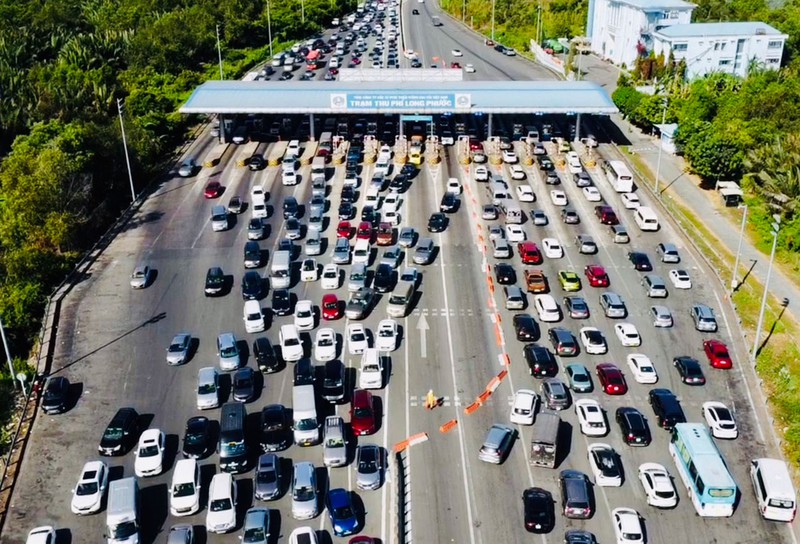
Traffic congestion on the Ho Chi Minh City-Long Thanh-Dau Giay Highway
Secondly, a “bottleneck” in construction materials. Resolution 106, which provided special mechanisms for directly allocating mineral resources to contractors, has expired as of June 30. This legal vacuum may push projects into a state of crisis regarding material supply, especially sand for land filling in the South.
Even the fastest-approved super-project cannot proceed without these fundamental resources.
Investment Opportunity: August 2025 – Five Urban Developments with a Capital Investment of Nearly 30.2 Trillion VND
In August 2025, five provinces attracted investment with seven projects, totaling nearly VND 31.3 trillion. Notably, Quang Ngai province sought investment for three urban areas, with a total investment of approximately USD 1 billion.
“Vietnam’s Prime Minister Meets with Top Chinese Corporations, Discussing Investment and Partnership Opportunities”
On August 31, Vietnamese Prime Minister Pham Minh Chinh attended the 2025 Shanghai Cooperation Organization (SCO) Summit in China and met with leaders of several leading Chinese corporations.

